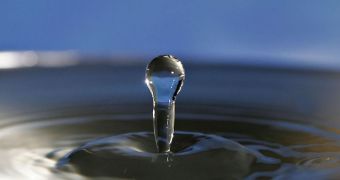A group of researchers in the United States announces the development of an improvement to an existing method of creating electricity from renewable sources. The upgrade can be applied to osmotic power plants, which use potential difference between salty and freshwater to produce electrical current.
But the innovation has a catch, which is adding special bacteria into the mix. With this improvement, the power plants also start producing hydrogen, one of chemicals touted to be the fuel of the future.
At this point, countless researchers are struggling to harness and tame this element into usable devices, usually batteries and fuel cells. However, numerous obstacles to its wide-scale adoption still exist, such as for instance its cost, and the fact that it is not readily available for purchase.
With the new approach – which is still electrochemical underneath it all – it may be possible to produce the element simply by putting salt water on one side of a membrane and freshwater on the other side. In this setup, bacteria go in the middle, Wired reports.
Under the action of disproportionate osmotic forces, ions (electrically-charged atoms) move from saltwater to freshwater, producing a charge difference that can be harnessed to produce electricity. Each cell applying this mechanism produces a relatively small voltage.
However, the good news is that this source of energy is virtually unlimited – more than 75 percent of the planet's surface is covered in some form of water – and that it's readily available for use 24/7.
In the new experiments, scientists tied five electricity-producing cells in series, and then connected the anode of the last one in the series to a host bacteria. The microorganism can consume organic material to produce excess electrons, which are then channeled through the cells.
But the cells produce electricity themselves, albeit in small amounts. When the electricity from both sources comes together, it has sufficient power to split water in its basic elements – hydrogen and oxygen. This process is called electrolysis.
For their proof-of-concept study, experts used acetate as organic material to feed the bacteria. They noted that hydrogen was produced continuously until all the acetate had been consumed by the bacteria, and no food remained.
Interestingly, the total energy content of the hydrogen was 36 percent that of the energy input as acetate. What this means is that salt-fresh water differences accounted for about 85 percent of the energy experts got as hydrogen.

 14 DAY TRIAL //
14 DAY TRIAL //